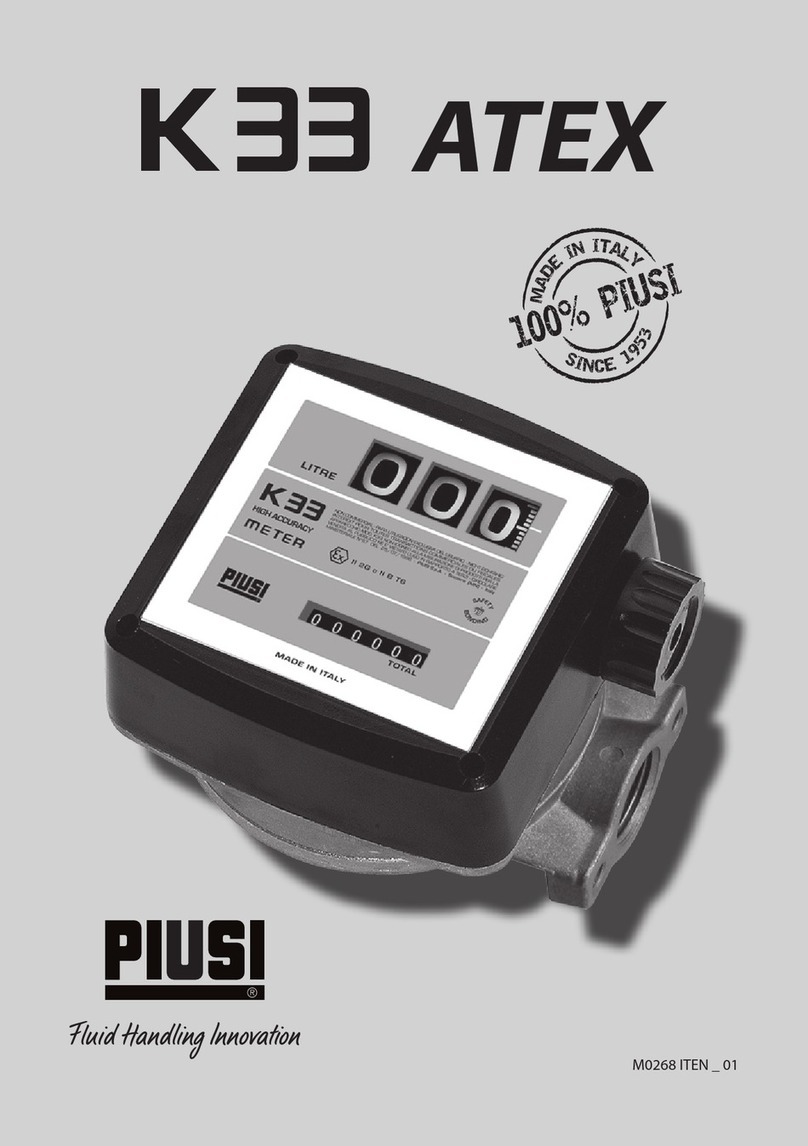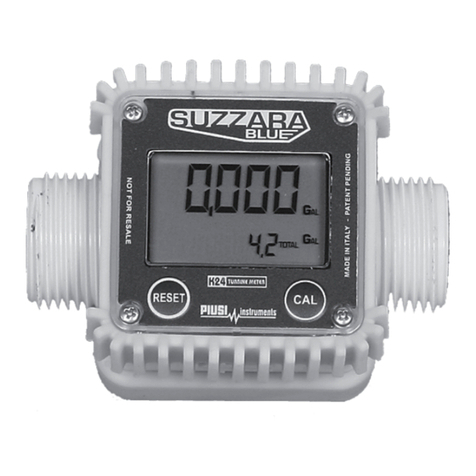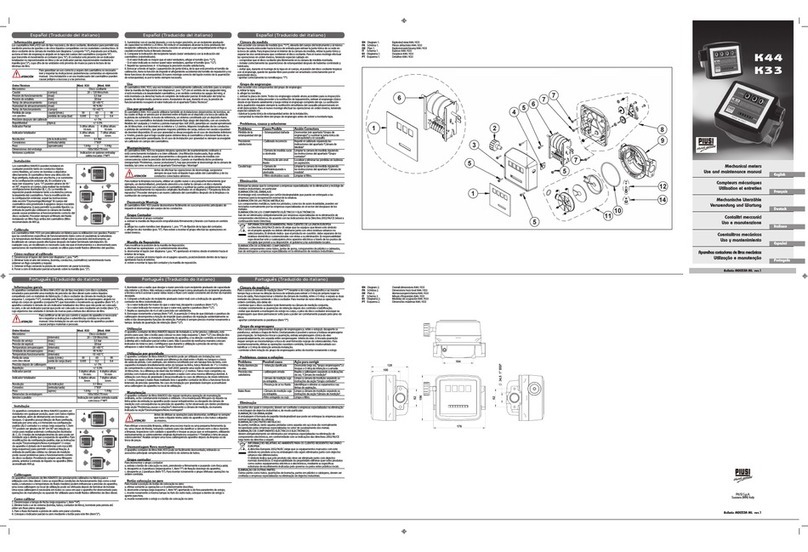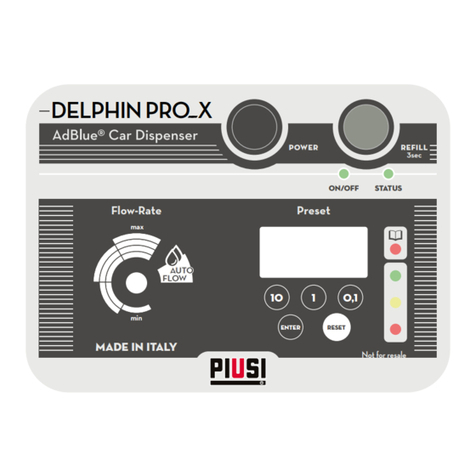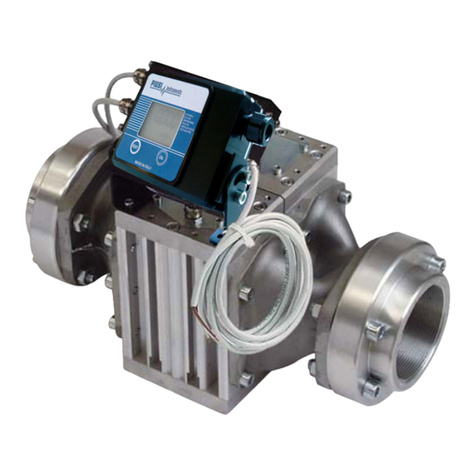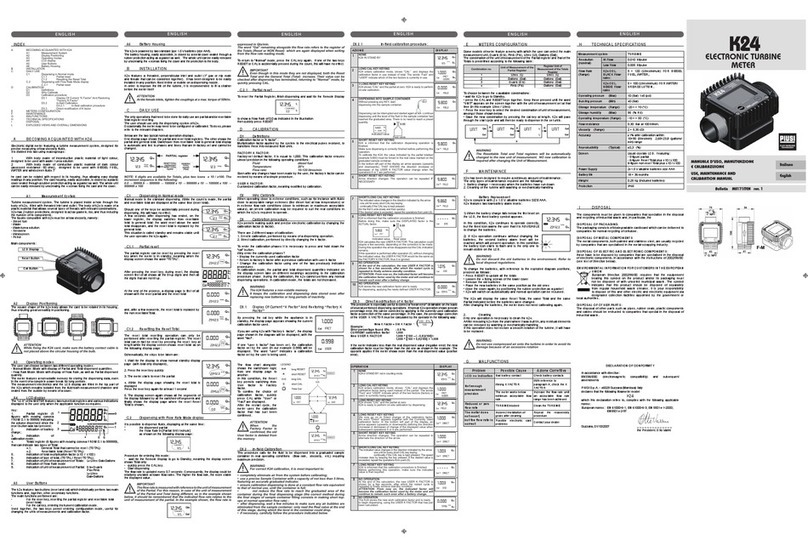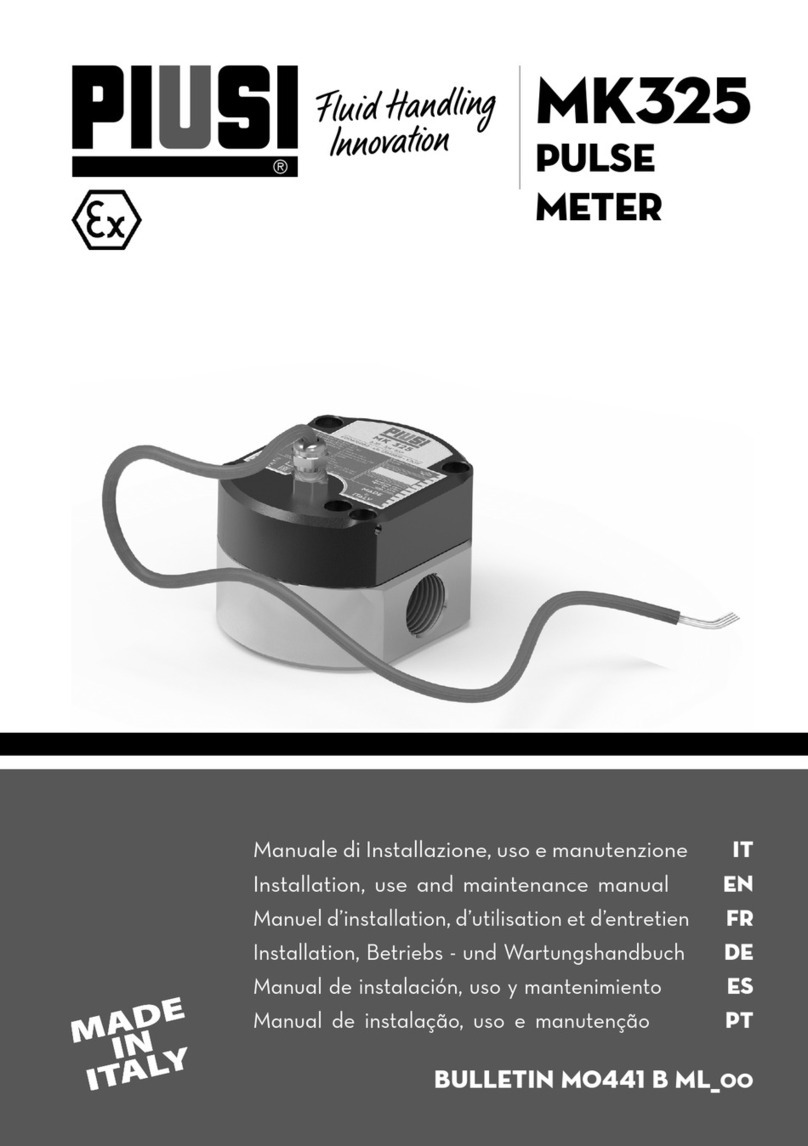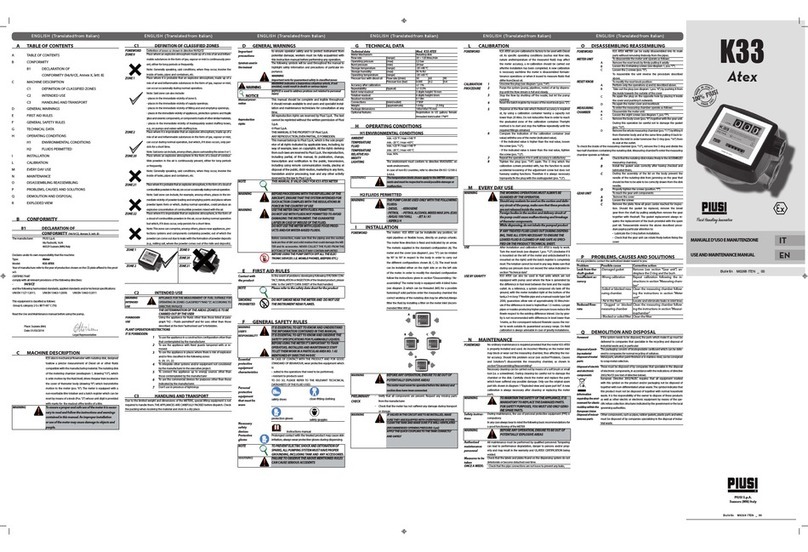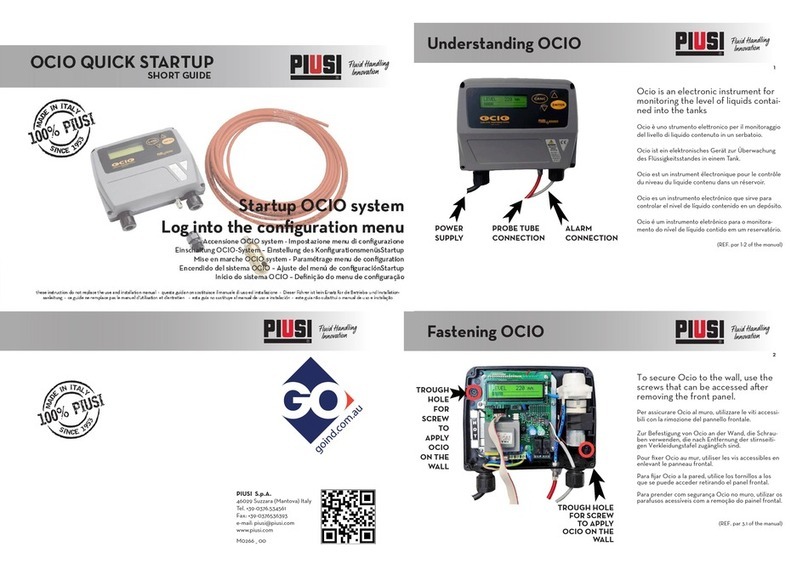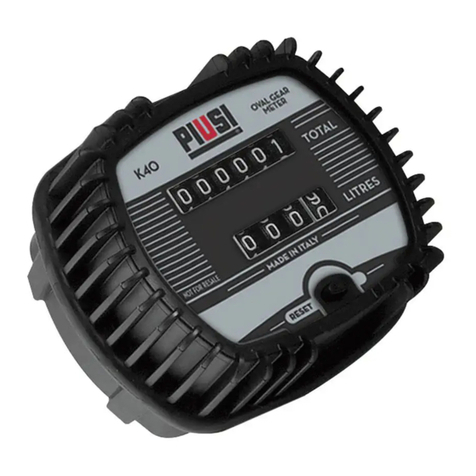
M0158B ITEN
34 /56
Installation, use and maintenance
4 BECOMING AQUANINTED WITH K900
FOREWORD METER is an electronic digital meter featuring an oval-gear measurement system, de-
signed for easy and precise measuring of oils, diesel, rapsoil and antifreeze.
FUNCTIONING
PRINCIPLE The fluid, by flowing through the appliance, rotates the gears which, during their rota-
tion, transfer, “volume units” of fluid. The exact measurement of the dispensed fluid is
done by counting the number of rotations made by the gears and consequently the
number of transferred “volume units”. The magnetic coupling, between the magnets
installed in the gears and a magnetic switch outside the measurement chamber, en-
sures measurement chamber sealing and ensures transmission of the pulses gener-
ated by gear rotation to the electronic board microprocessor.
OPERATIONAL
MODE In the dispensing mode (Normal Mode), the partial and the total amounts are shown in
two different registers of the LCD.
The METER features a non-volatile memory for storing the dispensing data, even in
the event of a complete power break for long periods.
4.1 LCD DISPLAY (ONLY METER VERSION)
FOREWORD The “LCD” of the METER features two numerical registers and various indications displayed to
the user only when the applicable function so requires.
1Partial register (5 figures with moving comma FROM
0.1 to 99999) indicating the volume dispensed since
the reset button was last pressed
6Indication of type of total, (TOTAL / Reset
TOTAL);
2Indication of battery charge 7Indication of unit of measurement of Totals:
L=Litres Gal=Gallons
3Indication of calibration mode 8Indication of Flow Rate mode
4Totals register (6 figures with moving comma FROM
0.1 to 999999), that can indicate two types of Total:
4.1.
General Total that cannot be reset (TOTAL)
4.2. Resettable total (Reset TOTAL)
9Indication of unit of measurement of Partial:
Qts=Quarts Pts=Pints
L=Litres Gal=Gallons
5Indication of total multiplication factor (x10 / x100)
456
9
7
1
2
3
8
Measurement
Chamber The measurement chamber of K900 consists of two chambers held together by the
manifold.
Inside the measurement chamber are the oval gears which, on turning, generate elec-
trical pulses which are processed by the microprocessor-controlled electronic board.
By applying a suitable calibration factor (meaning a “weight” associated with each
pulse), the microprocessor translates the pulses generated by the “fluid volume” ro-
tation expressed in the set units of measurement, displayed on the partial and total
registers of the LCD.
All the meters are factory set with a calibration factor called FACTORY K FACTOR
equal to 1,000. For best meter performance the instrument can be “calibrated”.
It is possible to return to factory calibration at any time.
Baery Housing K900 is powered by two standard type 1.5 V batteries (size 1N) .
The battery housing is closed by a threaded watertight cap that can be easily
removed for quick battery change.
